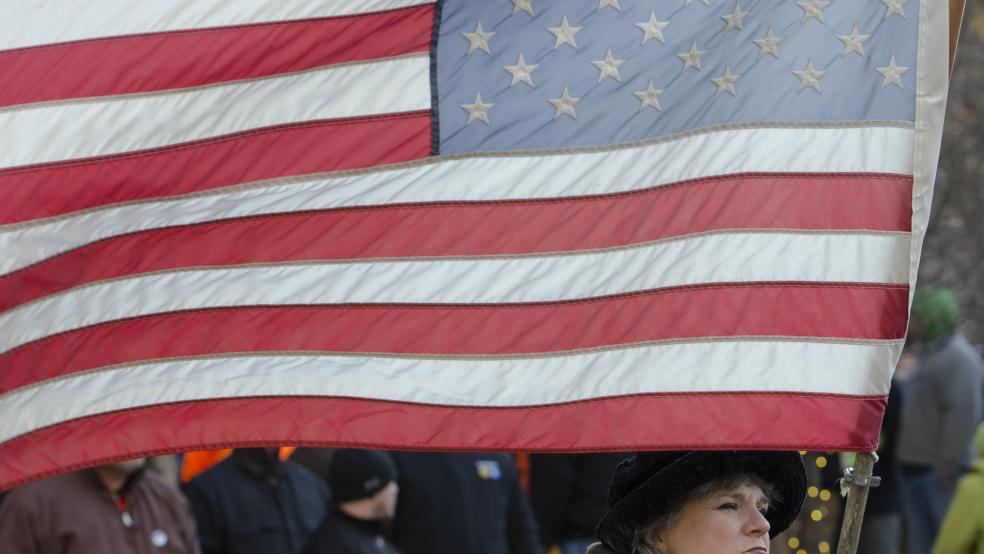The National Labor Relations Board has made it easier for workers to join unions. But if you want to leave, that's a different story.
Getting into a union is easy. The NLRB has reduced the time between a petition for union representation and a vote by workers from about 40 days to as few as 10 days. New union "quickie election" rules took effect in April 2015.
Similarly, the NLRB has approved the use of "micro-unions," small groups of workers who want to belong to a union, even if the entire workforce does not choose to do so. In 2014, the board allowed unions to organize any small group of employees as long as they had "a community of interest." On August 9, for example, a three-judge panel of the U.S. Third Circuit Court of Appeals sided with the NLRB in approving a unit of Fed-Ex drivers in South Brunswick, New Jersey, as a bargaining unit, leaving out dockworkers and package loaders.
Related: Clinton Snags AFL-CIO Official, Former Sanders Staffer, in Labor Outreach
If the NLRB truly had workers' interests at heart, it would make it equally easy for workers to leave unions. But although it takes as few as 10 days to vote to join a union, it can take years to vote to leave.
Take the case of NTN-Bower in Hamilton, Alabama, one of the largest manufacturers of precision roller bearings in the United States. Employees first asked for a decertification election in 2013. But it took five elections over the course of two years for the 140 workers to remove the United Auto Workers.
It's no easier for state employees to get rid of a union. A group of personal care assistants in Minnesota is trying to leave the Service Employees International Union-Healthcare Minnesota. Personal care assistants, who get Medicaid funds to look after disabled and sick people, are paid by the state of Minnesota.
In 2014, 3,500 workers chose to be represented by the SEIU. Minnesota is taking 3 percent (up to a maximum of $948 a year) out of the paychecks of those who voted for the union and sending the funds to the SEIU.
Although only 3,500 people voted to join the SEIU, it bargains on behalf of all 27,000 state assistants. To even have a vote to leave, they need to get signatures of 30 percent of the group, or 8,100 people.
Related: Three Ways Obama’s New Overtime Rule Hurts the Economy and Workers
Kim Crockett, director of the Employee Freedom Project at the Center of the American Experiment, a Minnesota-based policy organization, says, "Even though the 2014 Harris v. Quinn Supreme Court decision protects PCAs from mandatory dues, the SEIU now represents them against their will. So even if you are not a dues-paying union member, you are in the bargaining unit."
America's labor unions need to reinvent themselves for the modern economy.
The SEIU-Minnesota Healthcare unit had revenues of over $10 million in 2015, according to the form filed by the union to the Labor Department. It spends only 28 percent of these funds on bargaining.
In 2015, the union spent $189,706 on political activities and lobbying. It paid $140,004 to James Bialke, chief of staff; $117,532 to President Jamie Gulley; and $96,475 to Vice President Jigme Ugen. Expenditures include $5,754 for a dinner at the Hillcrest Golf Club and $39,941 at Image Pointe, an apparel store.
Consumers are protected from fraud by numerous organizations, including the Consumer Product Safety Commission and the Consumer Financial Protection Bureau. But if people are dissatisfied with their union, there's nowhere they can go to opt out.
This is National Employee Freedom Week, organized by the Nevada Policy Research Institute and the Association of American Educators to support workers' choice to leave their unions. In honor this occasion, we should make it just as easy for workers to leave unions as it is to get in.
This commentary was published originally in E-21, a website of the Manhattan Institute.






